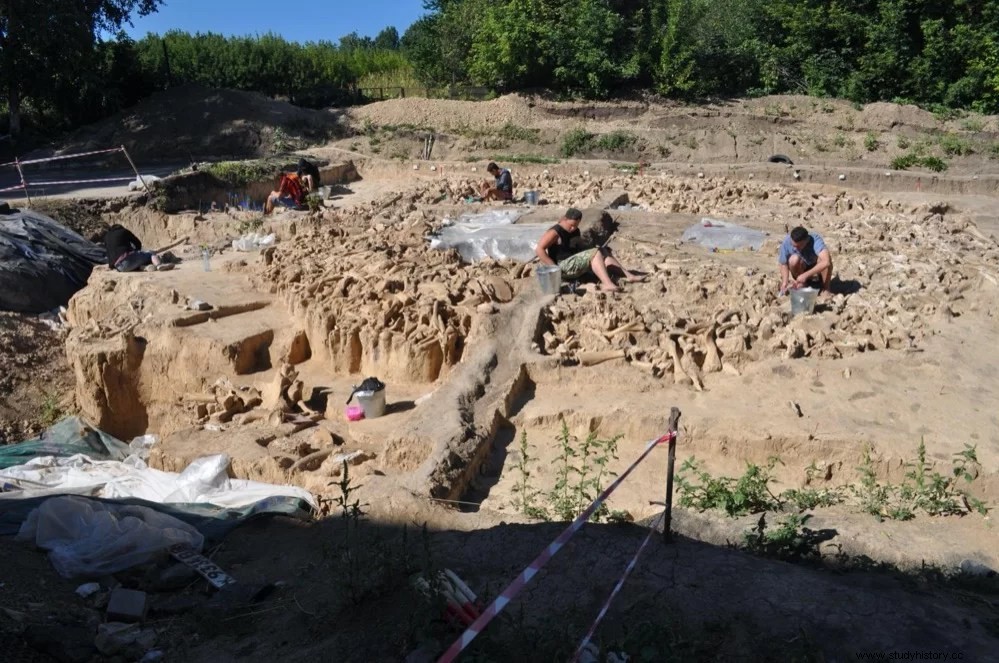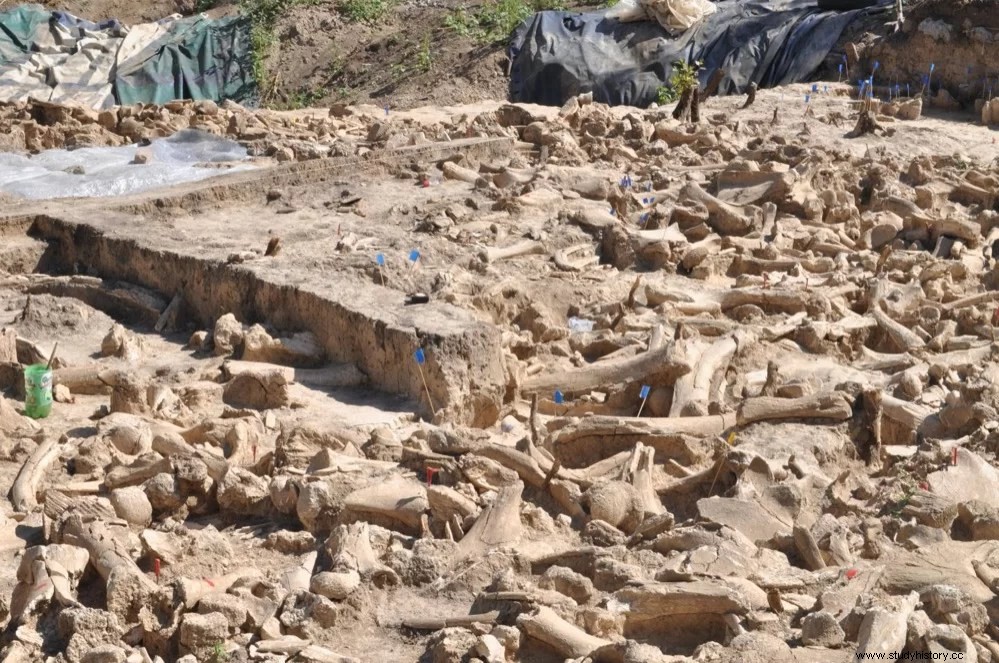Mysterious bone circles made from the remains of dozens of mammoths found in Ukraine and the western Russian Plain (where some 70 such structures exist) have revealed clues as to how ancient communities survived the ice age in Europe. Q>
New analysis shows that bones from one of the sites, called Kostenki 11 , are more than 20,000 years old, making it the oldest circular structure of its kind built by humans and discovered in the region. The bones probably came from animal burial grounds. The circle was hidden by sediment and now, once excavated, is one meter below surface level.
Most of the bones found at the site are from mammoths. A total of 51 lower jaws and 64 individual mammoth skulls were used to build the walls of the 30-by-30-foot structure and were scattered throughout its interior. Small amounts of reindeer, horse, bear, wolf, red fox, and arctic fox bones were also found.

Archaeologists from the University of Exeter found charred wood and other soft non-woody plant remains for the first time in such a characteristic structure, inside the circular structure which is situated just outside the modern village of Kostenki, about 500 km south of Moscow. This shows that people burned wood and bones for fuel, and that the communities that lived there had learned to forage for food plants during the Ice Age. The plants could also have been used for poisons, medicine, rope, or cloth. Also found were more than 50 small charred seeds, remains of plants that grew locally, or possibly food scraps from cooking and feeding.
Dr Alexander Pryor, who led the study, said:Kostenki 11 represents a rare example of Palaeolithic hunter-gatherers living in this harsh environment. What could have brought ancient hunter-gatherers to this site? One possibility is that mammoths and humans may have flocked to the area because it had a natural spring that would have provided unfrozen liquid water throughout the winter, a rare occurrence in this period of extreme cold.
These finds shed new light on the purpose of these mysterious sites. Archeology shows us how our ancestors survived in this desperately cold and hostile environment at the height of the last ice age. Most other places at similar latitudes in Europe had been abandoned by this time, but these groups managed to adapt to find food, shelter, and water .
The last ice age, which swept across northern Europe between 75,000 and 18,000 years ago, reached its coldest and most severe stage around 23,000 to 18,000 years ago, just as the Kostenki 11 structure was being built. Climate reconstructions indicate that at that time the summers were short and cool and the winters long and cold, with temperatures around -20 degrees centigrade or colder. Most of the communities left the region, probably due to the lack of prey to hunt and the plant resources they depended on for survival. Over time, the bony circles were also abandoned as the climate continued to get colder and more inhospitable.

Archaeologists have previously assumed that the circular bony structures of mammoths were used as dwellings, occupied for many months. The new study suggests this may not always have been the case, as the intensity of activity at Kostenki 11 appears lower than would be expected from a long-duration base camp.
Other finds include more than 300 tiny flint stones and chips just a few millimeters in size, debris left behind by the site's inhabitants as they kneaded stone nodules into distinctively shaped sharp tools used for tasks such as butchering animals and scraping skins.
The research, carried out by academics from the University of Exeter, the University of Cambridge, the Kostenki State Museum Reserve, the University of Colorado Boulder and the University of Southampton, was published in the journal Antiquity .
